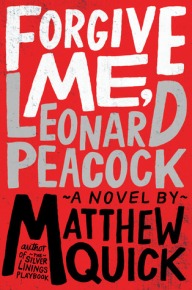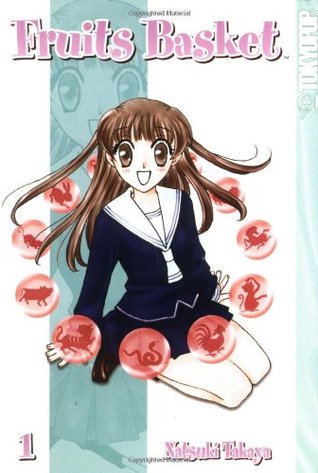Although conversations about depression and mental illness have received more attention over the years, “Most of the recent research on stigma reports that adolescents with mental disorders are personally affected by stigma in at least one area of their lives” (Lippman, n.d., para. 4). Stigma causes people to feel that their condition is their fault or that they’re “just being weak.” This results in low self-esteem, shame, and makes people more likely to hide their illness rather than seek help. Apply these stigmas to a sixteen-year-old, and you can imagine how damaging this can be.
The good news is that one of the most effective ways to fight the mental illness stigma is to educate others. “The National Annenberg Survey of Youth conducted a large scale study on these negative attitudes and found that youth who were informed with facts and able to dispel myths about individuals with mental health disorders were less likely to discriminate against them” (“Attitudes & Discrimination,” n.d.). The more educated we are, the easier it is for us to understand and show support.
I chose this topic because there is still much work to be done to raise awareness about mental illness, and teens need to know that there are resources available to help them. Specifically, this bibliography focuses on depression, as it is extremely common in teens, “As many as 2 out of 100 young children and 8 out of 100 teens may have serious depression” (“Depression: Understanding the Facts,” n.d.). Many of the sources I’ve compiled can help teens understand, diagnose, and then treat mental illness. However, I’m aiming for more than just that. It is my intention to list sources that also help teens understand the stigmas associated with mental illness, and how to move past them. The sources include fiction, nonfiction, music, and documentaries about depression. There have been criticisms against music, especially “emo” music. Some will argue that music that covers dark subject matter may influence teens and drive them to suicide. Based on the research I found, this is not true. “…for a large majority of teenagers and youth, listening to music has a positive mood effect” (Definis-Gojanović, Gugić, & Sutlović, 2009, 174).
Two of the resources listed are found from library websites. The rest are found throughout libraries across Nassau County. Any teen with a library card from a Nassau County library can check out these materials from any library in the county, regardless of what library he or she belongs to. Teens can also order these materials through the Nassau County web catalog here, or download online materials here.
Fiction

Twisted by Laurie Halse Anderson
Tyler is weird and everyone knows it. At school he can’t get any girl, never mind his crush, Bethany, the most popular girl in his grade. At home, his family is seriously dysfunctional. After he gets into trouble for spraying graffiti on his school, people finally start to notice him, including Bethany. But after a chain of events, Tyler’s world gets complicated, and he starts to miss being the weird, ignored kid. Deals with: depression, abuse.
 Wintergirls by Laurie Halse Anderson
Wintergirls by Laurie Halse Anderson
After Cassie and Lia compete in a deadly contest to see who can be the skinniest, Cassie pays the ultimate price. Left to her own devices, Lia is haunted by the ghost of her friend. As she loses more weight, she also loses more and more control over her life. Deals with: depression, self-harm, eating disorders.

I Was Here by Gayle Forman
Cody and Meg were best friends, until Meg suddenly took her own life. Cody doesn’t know what to do after a death she didn’t see coming at all. That is, until Cody decides to investigate what Meg’s life was like at college. There, she learns that Meg’s life was more complicated than she first thought, and as Cody uncovers more secrets, she realizes that her best friend may not have been the person Cody thought she was.

Forgive me, Leonard Peacock by Matthew Quick
On the day of his eighteenth birthday, Leonard brings a loaded gun to school. He will shoot his former best friend, Asher, and then himself. But first, he’ll give four gifts to four people who’ve impacted his life in some way.
Nonfiction
Mental Health Information for Teens: Health Tips About Mental Wellness and Mental Illness, Including Facts About Recognizing and Treating Mood, Anxiety, Personality, Psychotic, Behavioral, Impulse Control, and Addiction Disorders by Lisa Bakewell
A handbook with all the information you need. This book includes information on understanding mental health and how to recognize the warning signs, and ways to treat many common mental illnesses. You will also find a list of suggestions for further reading, and a directory of related organizations and crisis hotlines.
Hyperbole and a half: Unfortunate Situations, Flawed Coping Mechanisms, Mayhem, and Other Things That Happened by Allie Brosh
This book is a collection of hilarious artwork and stories by blogger Allie Brosh. Perhaps her most successful and significant stories are “Adventures in Depression” and “Depression Part 2”. She describes her downfall, and how difficult it was for friends and family to understand or offer advice. You can also find her stories about depression on her blog: http://hyperboleandahalf.blogspot.com
 Wasted: A Memoir of Anorexia and Bulimia by Marya Hornbacher
Wasted: A Memoir of Anorexia and Bulimia by Marya Hornbacher
A New York Times bestselling, Pulitzer Prize nominated memoir about a young woman’s struggles with eating disorders. Hornbacher also struggles with bipolar disorder, which she was diagnosed with after Wasted was published. In Wasted, Hornbacher warns that recovering from mental illness isn’t easy, but is possible.
 When Nothing Matters Anymore: A Survival Guide for Depressed Teens by Bev Cobain
When Nothing Matters Anymore: A Survival Guide for Depressed Teens by Bev Cobain
Bev Cobain, cousin of Nirvana’s Kurt Cobain, explains how depression affects your brain, depression in adolescents, and how it can lead to substance abuse and suicide. There are also chapters that explain how to get help, and survival tips for staying strong during times of hardship. Kurt Cobain committed suicide due to mental health issues in 1994. This book is Bev Cobain’s way of reaching out to those who may find themselves struggling with similar issues.
 Depression and Other Mood Disorders by Jon Ebon Field
Depression and Other Mood Disorders by Jon Ebon Field
This guidebook features information on diagnosing, treating, and dealing with depression. However, the chapter, “Dealing With Stigma”, is especially helpful in helping yourself, and others, to understand the difference between just “feeling down” or “having an off day”, and mental illness. This book is geared specifically toward adolescents.
Music

Nothing More by Nothing More
This hard rock band’s debut album features the single “Jenny”, which frontman Jonny Hawkins wrote in response to his family’s history with mental illness. The band has also started a campaign in hopes of raising awareness about mental illness. Check out #IKnowJenny on Twitter.
“Make It Stop (September’s Children)” by Rise Against on Endgame
The single is featured on the Rise Against album Endgame. The song was written in response to the LGBT children suicide rates, but ultimately the ending features an empowering and triumphant message. Rise Against also allied with It Gets Better Project, an organization that reaches out to LGBT people experiencing depression or who have suicidal thoughts. The music video features clips from contributors to It Gets Better Project.
Online Resources
Help Guide for Teens
The Brooklyn Public Library website has a Help Guide for Teens, where you’ll find links to websites that can provide answers to questions about various issues, including mental health. There’s also a directory for crisis center hotlines, including the National Suicide Prevention Lifeline.
Teen Issues
The East Hampton Library has a directory with a list of helpful organizations and their locations, hours, and phone numbers. You can find this under the Teen Issues tab.
Movies and Documentaries
Of Two Minds
Of Two Minds is a documentary that tells the story of several Americans dealing with bipolar disorder. The documentary details the periods of extreme highs and crippling lows associated with bipolarity.
The Silver Linings Playbook
This critically acclaimed film is the story of Pat, who was just released from a state institution and has a broken relationship with his wife. When Pat meets Tiffany, a young woman dealing with her own issues, she offers to help Pat reach out to his wife, if he returns the favor.
References
5 Documentaries About Mental Illness – Best Counseling Degrees. (n.d.). Retrieved November 7, 2016, from http://www.bestcounselingdegrees.net/lists/5-documentaries-about-mental-illness/Attitudes & Discrimination. (n.d.). Retrieved November 9, 2016, from http://youth.gov/youth-topics/youth-mental-health/role-stigma
Even When It Hurts ‘ALOT,’ Brosh Faces Life With Plenty Of ‘Hyperbole’ (2013, November 12). Retrieved November 10, 2016, from http://www.npr.org/2013/11/12/244758140/even-when-it-hurts-alot-brosh-faces-life-with-plenty-of-hyperbole
Definis-Gojanović, M., Gugić, D., & Sutlović, D. (2009). Suicide and Emo youth subculture–a case analysis. Collegium Antropologicum, 33 Suppl 2, 173-5.
Depression: Understanding the Facts. (n.d.). Retrieved November 5, 2016, from https://www.adaa.org/understanding-anxiety/depression
Lippman, B. L. (n.d.). Department of Applied Psychology. Retrieved November 6, 2016, from http://steinhardt.nyu.edu/appsych/opus/issues/2011/spring/stigma
Titus, C. (2015, April 4). Exclusive: Nothing More Premieres Highly Personal ‘Jenny’ Video. Retrieved November 5, 2016, from http://www.billboard.com/articles/columns/rock/6516808/nothing-more-jenny-video-premiere-i-know-jenny-initiative
Wilson, K. (2016, May 4). 16 Nonfiction Books About Mental Illness. Retrieved November 5, 2016, from https://www.bustle.com/articles/157345-16-nonfiction-books-about-mental-illness


 Wintergirls by Laurie Halse Anderson
Wintergirls by Laurie Halse Anderson

 Wasted: A Memoir of Anorexia and Bulimia by Marya Hornbacher
Wasted: A Memoir of Anorexia and Bulimia by Marya Hornbacher When Nothing Matters A
When Nothing Matters A Depression and Other Mood Disorders
Depression and Other Mood Disorders 